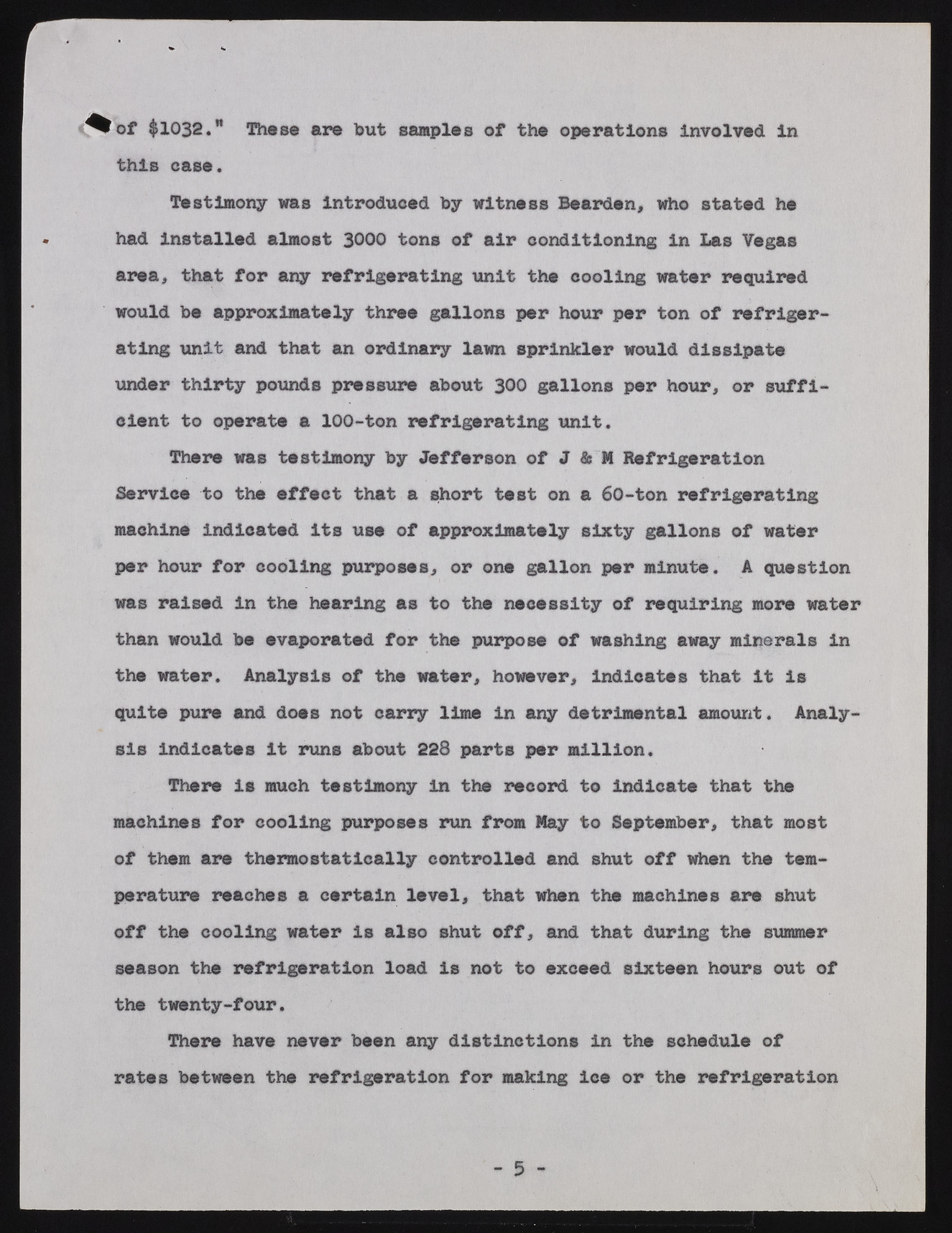Copyright & Fair-use Agreement
UNLV Special Collections provides copies of materials to facilitate private study, scholarship, or research. Material not in the public domain may be used according to fair use of copyrighted materials as defined by copyright law. Please cite us.
Please note that UNLV may not own the copyright to these materials and cannot provide permission to publish or distribute materials when UNLV is not the copyright holder. The user is solely responsible for determining the copyright status of materials and obtaining permission to use material from the copyright holder and for determining whether any permissions relating to any other rights are necessary for the intended use, and for obtaining all required permissions beyond that allowed by fair use.
Read more about our reproduction and use policy.
I agree.Information
Digital ID
Permalink
Details
More Info
Rights
Digital Provenance
Publisher
Transcription
of $1032." These are hut samples of the operations involved In this case. Testimony was introduced by witness Bearden, who stated he had Installed almost 3000 tons of air conditioning in Las Vegas area, that for any refrigerating unit the cooling water required would be approximately three gallons per hour per ton of refrigerating unit and that an ordinary lawn sprinkler would dissipate under thirty pounds pressure about 300 gallons per hour, or sufficient to operate a 100-ton refrigerating unit. There was testimony by Jefferson of J & M Refrigeration Service to the effect that a short test on a 60-ton refrigerating machine indicated its use of approximately sixty gallons of water per hour for cooling purposes, or one gallon per minute. A question was raised in the hearing as to the necessity of requiring more water than would be evaporated for the purpose of washing away minerals in the water. Analysis of the water, however, Indicates that it is quite pure and does not carry lime in any detrimental amount. Analysis indicates it runs about 228 parts per million. There is much testimony in the record to Indicate that the machines for cooling purposes run from May to September, that most of them are thermostatically controlled and shut off when the temperature reaches a certain level, that when the machines are shut off the cooling water is also shut off, and that during the summer season the refrigeration load is not to exceed sixteen hours out of the twenty-four. There have never been any distinctions in the schedule of rates between the refrigeration for making ice or the refrigeration

